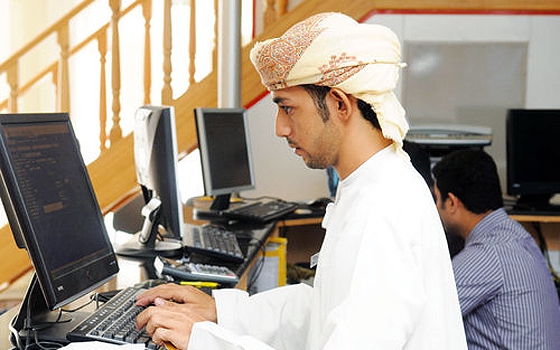A range of government initiatives are driving ICT adoption in Oman, as the sultanate works to connect all homes and businesses to the national broadband network by 2040.
Sector growth is being driven in part by government efforts to promote connectivity, a key element of the broader Digital Oman Strategy (eOman) launched in 2003, which is focused on developing IT skills, digital literacy and e-government services.
Policy goals
The eOman strategy, which is being spearheaded by the Information Technology Authority (ITA), the sector regulator, is aimed at expanding ICT uptake across all sectors of the economy by developing the requisite support infrastructure, promoting training initiatives and backing start-ups.
These are just the early stages of a far more ambitious programme, the authority’s CEO Salim Al Ruzaiqi told OBG. “By 2040 we want to develop IT as its own stand-alone, vertical sector – this is our ultimate goal,” he said.
To keep ahead of growing demand, Oman has been steadily expanding its existing fibre-optic network, as well as granting telecoms providers like Omantel and Ooredoo Oman backbone access to broaden availability of fibre-to-the-home connections.
The Oman Broadband Company, created in April 2014, is working to expand fibre-optic infrastructure, with the goal of covering 90% of Muscat Governorate by 2021. By 2030, all urban areas are poised to have 95% broadband connectivity, with satellite and/or mobile broadband coverage identified as potential last-mile solutions for difficult to access rural areas.
The government has also actively sought to promote digital literacy in recent years. By 2013, around 100,000 Omanis had attended internet training programmes, with 90,000 free computers and 72,000 free modems distributed through the country's National PC Initiative, according to the ITA.
Demand on the rise
As high-speed connectivity penetration rises, so too will demand for more advanced hardware, both in terms of computers and mobile communications technology. This in turn is expected to fuel demand for software and services, helping to create the vertical growth envisaged by the ITA.
Uptake of IT services is rising sharply, thanks to strong private sector demand, Alain Sawaya, managing partner of Oman Data Park, the country's oldest and largest managed service and hosting service provider, told OBG. According to Sawaya, the company’s year-to-date revenues were up 35% year-on-year in September as a result.
“IT is becoming an integral part of business across the globe, and Oman is no exception,” Ahmed Auda, general manager of Gulf Business Machines Oman (GBM), told OBG. “Many private sector clients are now requesting total solutions and are looking to further integrate ICT into their businesses to maximise efficiency and commercial benefits.”
According to Auda, businesses in sectors from health care and education to oil and gas, as well as the government, can leverage IT to optimise their operations. “The field is becoming demystified and decision-makers are prioritising it more,” he added.
However, concerns remain that lower energy prices could see a scaling back of government spending on ICT, which has traditionally been one of the driving forces of the industry, Sawaya told OBG, putting added emphasis on the need for private sector investment to bolster growth.
“The government usually spends around 7-9% of the budget on IT. Given the decrease in oil prices, this may be set to drop this year, or the government may need to look into an IT services model,” he added.
Cybersecurity leadership
A key area that could help bolster private sector demand in Oman is cybersecurity, which has been a national priority in recent years, benefitting from significant investment in both technology and human resources.
In its most recent report on global cybersecurity, the International Telecommunications Union (ITU) ranked Oman first in the Middle East and third in the world in terms of preparedness against cyberattacks, ranking ahead of Norway, Japan and Germany.
According to the ITU report, released in the second quarter of 2015, Oman’s ranking was due in large part to the government’s comprehensive cybersecurity strategy, which includes a clear legal framework, as well as cooperation at the national and international level.
Oman has more than 10 partnerships with countries and organisations aimed at sharing cybersecurity knowledge and assets, local media reported in July, and has been working with the Ministry of Education to introduce cybersecurity training in classrooms around the country.
The sultanate’s ongoing commitment to cyber defence offers myriad opportunities for local and foreign ICT service providers, with strong demand growth expected in both the public and private sector.
“The top IT users in Oman are the telecoms sector, the banking sector and the government,” GBM’s Auda told OBG. “Due to the constantly evolving nature of cyberthreats, these sectors require a high degree of security for their systems, which suggests that demand for upgraded technology and solutions will continue.”
Oxford Business Group
























































